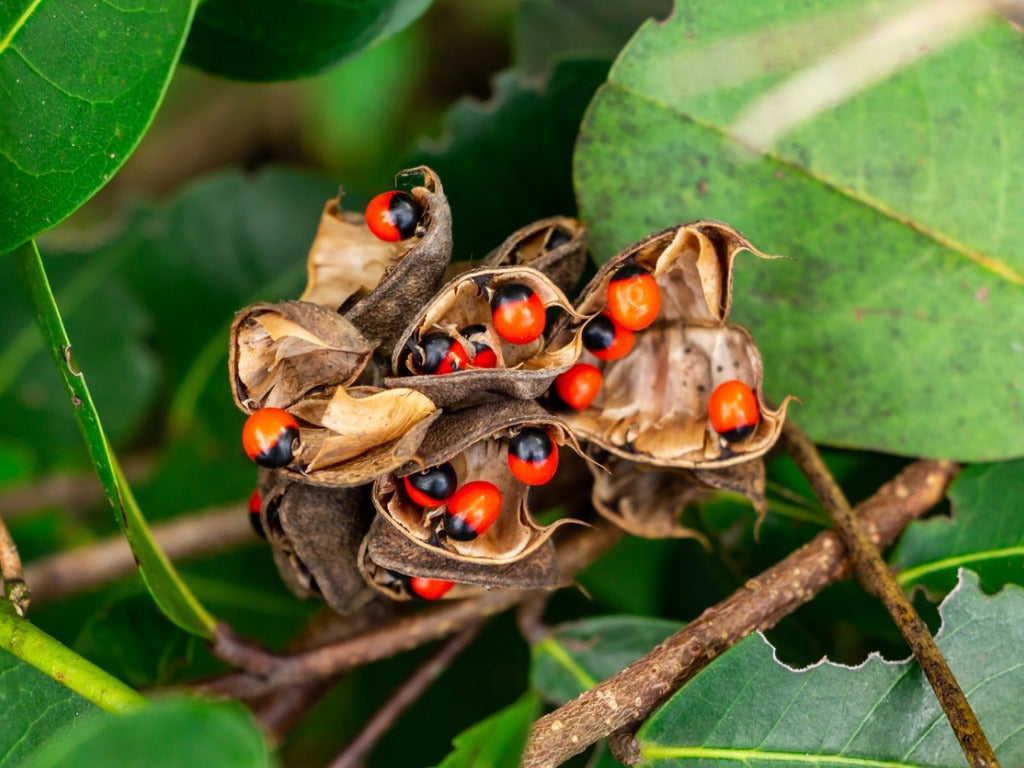What Is Rosary Pea – Should You Grow Rosary Pea Plants


If you have heard of rosary pea or crab's eyes, you are familiar with Abrus precatorius. What is rosary pea? The plant is native to tropical Asia and was introduced to North America around the 1930’s. It enjoyed popularity as an attractive vine with pretty pea-like, lavender blooms. However, in some regions, it is now considered a nuisance plant.
What is Rosary Pea?
Finding hardy, tropical vines with several seasons of interest can be difficult. In the case of rosary pea, you get delicate foliage, beautiful flowers, and interesting seeds and pods combined with a tough, no-fuss nature. In certain regions, rosary pea invasiveness has made it a problem plant.
The plant is a climbing, twining, or trailing woody-stemmed vine. The leaves are alternate, pinnate, and compound giving them a feathery feel. Leaves may grow up to 5 inches (12.5 cm.) long. The flowers look much like pea blooms and may be white, pink, lavender, or even reddish. Long, flat, oblong pods follow the blooms and will split when ripe to reveal bright red seeds with a black spot, which leads to the name crab's eyes.
Rosary pea seed pods have been used as beads (hence the name rosary) and make a very bright, pretty necklace or bracelet.
Should You Grow Rosary Pea?
It is always interesting that what is considered an invasive species in one area is ornamental or even native in others. Rosary pea invasiveness has infected many states and counties. It is native to India and grows very well in warm regions where it can escape cultivation and compete with native vegetation. It is also a very desirable, ornamental vine with fabulous pods and brightly colored seeds and blooms.
In Florida, it is a Category 1 invasive species, and the plant should not be used in that state. Check with your local extension office before choosing to grow this interesting vine in your landscape.
Is Rosary Pea Poisonous?
As if the plant doesn't have enough problems due to its invasiveness potential, it is also extremely toxic. Rosary pea seed pods offer an interesting ornamental detail but housed inside is certain death. Each seed contains abrin, a deadly plant toxin. Less than a single seed can cause fatality in an adult human.
Sign up for the Gardening Know How newsletter today and receive a free copy of our e-book "How to Grow Delicious Tomatoes".
Usually, it is children and pets that snack on landscape plants, which makes it very dangerous to have in the garden. The symptoms are nausea, vomiting, diarrhea, burning in the throat, abdominal pain, and ulcers in the mouth and throat. Untreated, the person will die.

Bonnie Grant is a professional landscaper with a Certification in Urban Gardening. She has been gardening and writing for 15 years. A former professional chef, she has a passion for edible landscaping.